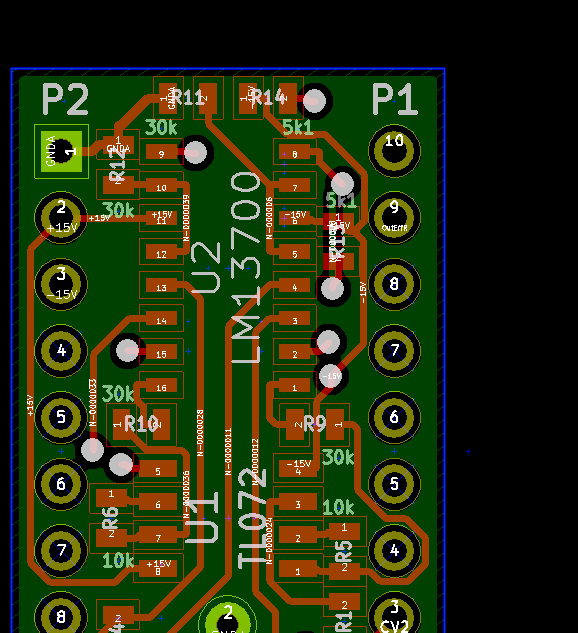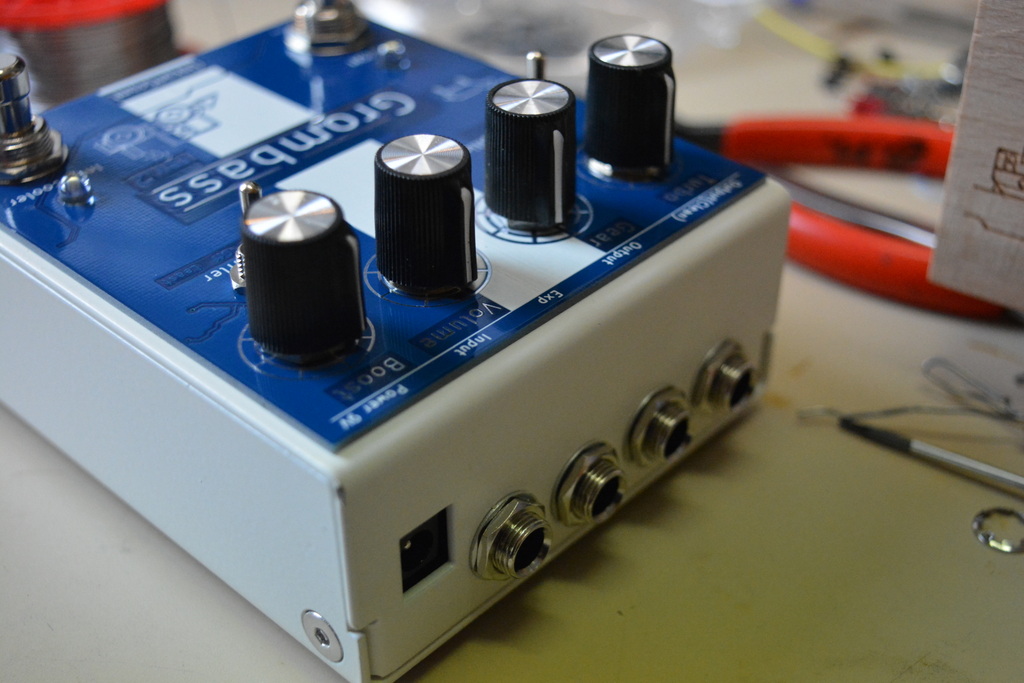
Here is a brilliant e-book on basic soldering. This is a free book that you should share with your friends and spread the knowledge.
http://mightyohm.com/blog/2011/04/soldering-is-easy-comic-book/

Here is a brilliant e-book on basic soldering. This is a free book that you should share with your friends and spread the knowledge.
http://mightyohm.com/blog/2011/04/soldering-is-easy-comic-book/

Why not start making your own stuff? But where to start? Well, start by downloading Kicad; the best open source schematic and PCB layout program. And it has become really good lately. Check out the new website and give it a try. You should also check out some tutorials on youtube to get started.

Ever wonder how these signals travels trough a circuit? Well, it can be quite complicated at times.
This little app lets you see the current and voltage as they change. This is really handy when you need to understand the principles. Would not use this if I should simulate some large circuits though.. And it can be a bit tricky to add new components. Check out the demo circuits to get the idea!

[vc_row][vc_column][vc_empty_space height=”50px”][/vc_column][/vc_row][vc_row][vc_column width=”2/3″][vc_video link=”https://youtu.be/YJwFQmgekHI”][/vc_column][vc_column width=”1/3″][vc_column_text]
Take a look at how the waveforms from the Grombass actually looks like and an explanation on some of the functions and tech behind.
[/vc_column_text][/vc_column][/vc_row][vc_row][vc_column][vc_empty_space height=”50px”][/vc_column][/vc_row]

Why are some instruments and effects still operating after 30 years? Maybe the design was well thought and the craftsmanship good? I think so.
It all start with the design. It does not matter how good you are to assemble a box if the design is bad. So, how make a robust design?
There are some points that I will bring out in that matter;
But where to start with all this?
Wee, there are a LOT of articles written about this already. Just search “DFM” on google and take a look. You will find tips and rules on how to make electronics that is possible to produce in the best manner. I would like to point out the IPC standard. That is common standards describing everything from the layout of a board to how to mount it in a factory.  Why is that important to have standards for this? Because you can refer to them and you don’t have to write all the specs on how the production of your design should be done. It is a well thought common frame for both the designer and the producer. That is why it is important that the designer of the circuits is familiar with this. Øyvind Mjanger is a certified PCB designer (CID). Good.
Why is that important to have standards for this? Because you can refer to them and you don’t have to write all the specs on how the production of your design should be done. It is a well thought common frame for both the designer and the producer. That is why it is important that the designer of the circuits is familiar with this. Øyvind Mjanger is a certified PCB designer (CID). Good.
You should also know how to produce electronics in a factory. That requires experience from the field. Then you know how to place parts so they don’t collide with the machines during production. And so on.

[vc_row][vc_column][vc_column_text]How many times have you got this fancy new (or old) effect that doesn’t use the standard 9V negative center? And why is it only effect boxes that uses negative center while everything else use positive center?
And you should also have an isolated power to avoid hum and other nasty stuff.
So.. what to do?
Make something that works with all combinations. Actually quite simple.
What we did is to make it simple for you. Put your adapter in and it will work. Isolation is taken care of inside the box. You don’t need the isolated power supply. You can use the daisy chain and no worries.
And you got 18V headroom inside the effect. That’s quite ok. Should be enough for most of us.[/vc_column_text][/vc_column][/vc_row][vc_row][vc_column][vc_empty_space][/vc_column][/vc_row][vc_row][vc_column width=”1/2″][vc_column_text]
[/vc_column_text][/vc_column][vc_column width=”1/2″][vc_empty_space height=”80px”][/vc_column][/vc_row][vc_row][vc_column width=”1/2″][cs-piechart type=”barchart” inner_cutout=”0″ width=”15px” height=”10px” values2=”JTdCJTIybGFiZWxzJTIyJTNBJTVCJTIyTWluLiUyMFZvbHRhZ2UlMjBEQyUyMiUyQyUyMk1heC4lMjBWb2x0YWdlJTIwREMlMjIlMkMlMjJNaW4uJTIwVm9sdGFnZSUyMEFDJTIyJTJDJTIyTWF4LiUyMFZvbHRhZ2UlMjBBQyUyMiU1RCUyQyUyMmRhdGFzZXRzJTIyJTNBJTVCJTdCJTIybGFiZWwlMjIlM0ElMjJWb2x0YWdlJTIwcmFuZ2UlMjIlMkMlMjJmaWxsQ29sb3IlMjIlM0ElMjJyZ2JhJTI4MjIwJTJDMjIwJTJDMjIwJTJDMC42JTI5JTIyJTJDJTIyc3Ryb2tlQ29sb3IlMjIlM0ElMjJyZ2JhJTI4MjIwJTJDMjIwJTJDMjIwJTJDMSUyOSUyMiUyQyUyMnBvaW50Q29sb3IlMjIlM0ElMjJyZ2JhJTI4MjIwJTJDMjIwJTJDMjIwJTJDMSUyOSUyMiUyQyUyMnBvaW50U3Ryb2tlQ29sb3IlMjIlM0ElMjIlMjNmZmYlMjIlMkMlMjJwb2ludEhpZ2hsaWdodEZpbGwlMjIlM0ElMjIlMjNmZmYlMjIlMkMlMjJwb2ludEhpZ2hsaWdodFN0cm9rZSUyMiUzQSUyMnJnYmElMjgyMjAlMkMyMjAlMkMyMjAlMkMxJTI5JTIyJTJDJTIyZGF0YSUyMiUzQSU1QjclMkMyMCUyQzUlMkMxOCU1RCU3RCU1RCU3RA==” title=”Min. Voltage”][/vc_column][vc_column width=”1/2″][vc_single_image image=”8007″ img_size=”full”][/vc_column][/vc_row]